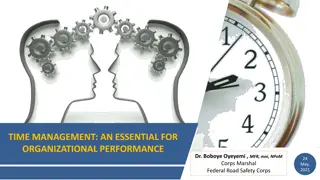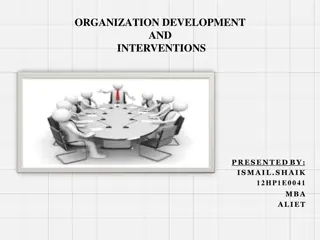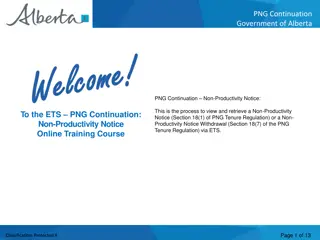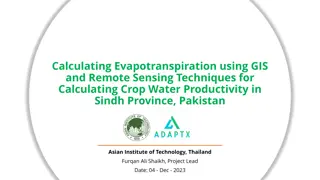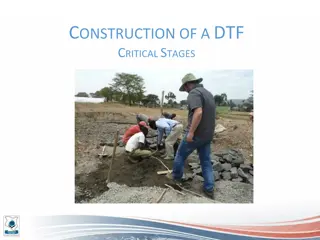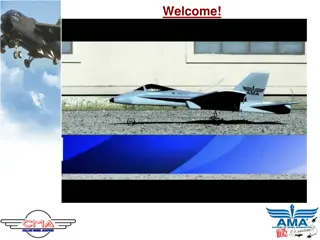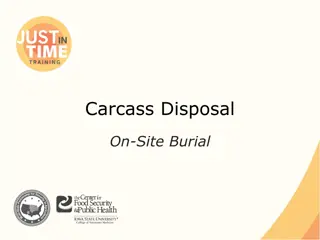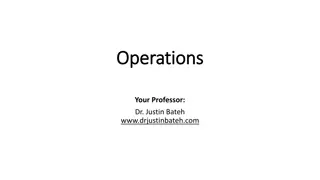Efficient Project and Site Organization for Improved Productivity
Effective project and site organization is crucial for maximizing productivity and ensuring smooth operations. This involves defining roles and responsibilities, optimizing site layout, and choosing the right organizational structure such as functional, project-oriented, or matrix. Each structure has its unique influences on project management, with project-oriented organizations offering greater independence to project managers. Poor organization can lead to inefficiencies and reduced productivity, emphasizing the importance of proper planning and control.
Download Presentation

Please find below an Image/Link to download the presentation.
The content on the website is provided AS IS for your information and personal use only. It may not be sold, licensed, or shared on other websites without obtaining consent from the author. Download presentation by click this link. If you encounter any issues during the download, it is possible that the publisher has removed the file from their server.
E N D
Presentation Transcript
CHAPTER 5 Project and site organization
Project Organization Project Organization The main task of any organization is to plan, direct and control. Poor organization result in poor productivity. Defining individual positions of authority and responsibility will lead to an effective operating environment and good productivity. Site layout of the project is a very important organization tasks. The assigned location of different job components affects productivity, safety, workers satisfaction, and communication. Approximately, 7% of a day is nonproductive because of a non optimal site layout.
There are four type of organizational structures each of which has their own unique set of influences on the management of the organizations projects.:- 1. Functional 2. Project 3. Matrix or composite
Functional most organizations are divided along functional lines that is each devision is organized by work type such as engineering production or sales. In the functional organizational structure projects are initiated and executed by the divisional managers, who assume the project manager duties in addition to their regular functional roles .they are often given secondary titles such as coordinator of project x. in this structure, project manager usually don t have a lot of authority to obtain resource or to manage schedules and budgets. They must obtain approvals to utilize resources from other departments which can be a complex undertaking. This is because the functional organization is designed to focus on the provision of the divisional services rather than project deliverables
Project on the other end of the scale is the project oriented organization. These companies do most of their work on a project basis and are therefore structured around projects. This architectural firms Project managers are usually full time in the role, and for small projects they might manage several In this structure project managers usually have a great deal of independence and authority. They are able to draw on resources with little required approval. In fact, most of these types of organizations have some form of functional divisions which are placeholders for resources that can be utilized by all projects. They are For example, at an engineering firm the geotechnical department is available as an expert resource to all oriented includes construction and contractors, consultant. projects at once. usually called departments. projects within the firm.
Matrix Although the project-oriented and functional structures are at opposite ends of the spectrum, it is possible to be located somewhere in between (a hybrid). In fact, most organizations are along some level of the spectrum, utilizing a structure that gives project managers a bit more authority without losing focus on the provision of functional services. In the typical matrix structure, a project manager is assigned from within one of the functional departments in either a part time or full time capacity. They are assigned project team members from various departments, who are released from their departmental duties (at least partially). Thus, a high priority can be placed on the project while maintaining the functional division services. However, the project manager and team members are still paid by their respective functional departments, thus the final accountability for the project still lies at the functional level. For example, if one of the department managers thinks that they have contributed more than their fair share, the project will stall quickly.
From a theoretical point of view, there are two more adjustments that can be made. A weak matrix retains the management of the project in the hands of the functional managers instead of the project team, like this:
On the other side, a strong matrix is still a functional organizational structure, but has a completely separate project management arm. All of the project roles are still fulfilled within the functional departments, but the project manager is on the same level as the functional managers.
This project management arm often takes the form of a Project Management Office, or PMO. In spite of its name, the terms strong and weak matrix are not meant to imply a level of desirability to the organization. The names have been coined by the project management industry which has studied the role of projects within organizations, and hence they correspond to strength or weakness in achieving project success. But if that comes at the expense of poorer delivery of functional services, the organizational s goals are not necessarily being achieved. Hence, the correct project organizational structure is one which achieves the organization s goals, and this can fall anywhere along the project/functional spectrum according to the specific needs of the organization and/or project.
Composite Functional organizations and project-oriented organizations are at opposite ends of the spectrum and matrix organizations fall somewhere in between. But it is possible to utilize both structures at the same time. Therefore, there is a fourth option that requires mention, the composite structure. This occurs when a project structure and a functional structure both report to a central executive. For example, a state government department of transportation has a maintenance division which seeks to maintain the level of service of the state s roads and bridges, and a capital projects division which builds new roads and bridges. The maintenance division and the capital projects division are located side by side, reporting to the executive. This is a composite organizational structure (A matrix structure would require new construction to occur within one of the maintenance departments the project manager would report to a functional manager rather than the executive). Most organizations lean one way or the other rather than using both structures, because of the drastically different management styles necessary to perform each of the roles well.
Site management is the day-to-day on site control of a construction project to prepare the site for the construction, to keep it within the timescale and budget, to tackle with any delays or problems to ensure quality and health and safety to coordinate communications between all parties involved in the on-site development and with the public.
SITE LOGISTICS Information and management Material and components
WASTE MANAGEMENT ON THE SITE minimum requirements separation groups
CONSTRUCTION SITE COMMUNICATION information management information distribution plan utilization change management
SITE SECURITY AND SAFETY to avoid losses of materials and plant through theft, and vandalism and careless behavior to prevent fire on site to prevent health injury, to avoid accident to protect equipment and machinery (property) to protect public
CONSTRUCTION EQUIPMENT LOGISTICS optimal use of material and construction work capacity optimal use machinery and equipment to minimize/reduce waste to minimize material movement Construction site layout planning (site planning): is a plan for the construction, which is prepared by the contractor as part of their mobilization activities before work on site commences.
TRANSPORTATION AND STORING MATERIALS Is it necessary to store components or is it possible to lift them directly to its ultimate place? Is it necessary to store material or is it possible to distribute it to the place of use? Is the size of the component standard and easily transportable or does it need special handling? What is the required amount of material? How much is applied at once? Is it worth to deliver separated packages? Is it possible to place one onto the other? Which position it have to be stored in? (The same as the ultimate position in the building.) How many packages can be stored on top of each other? How many is reasonable to be stored on each other? Is the material sensitive for weather effects as wind, UV radiation, temperature, rain, moisture, etc.? Are there alternative materials to reduce cost and/or time?




